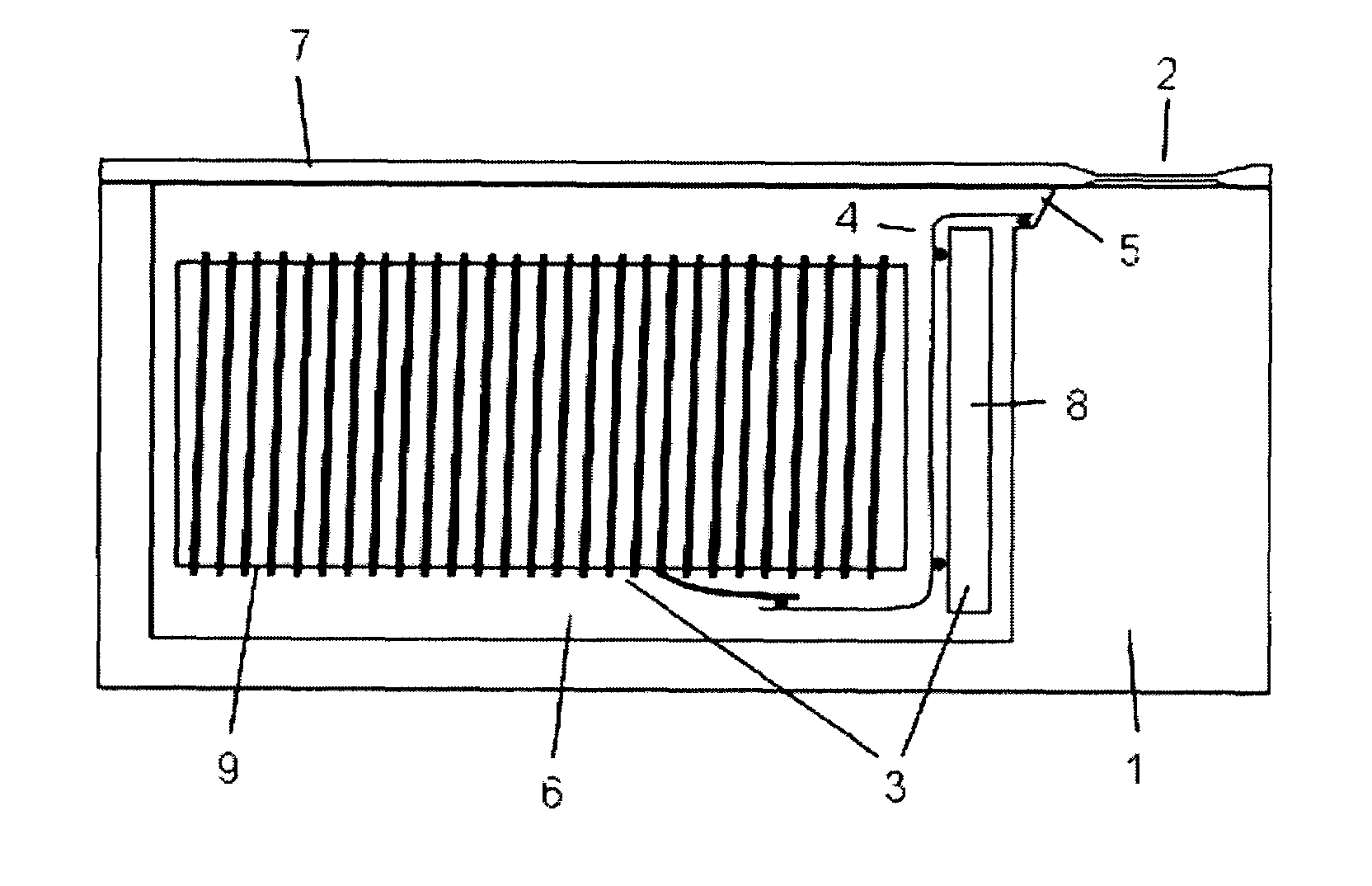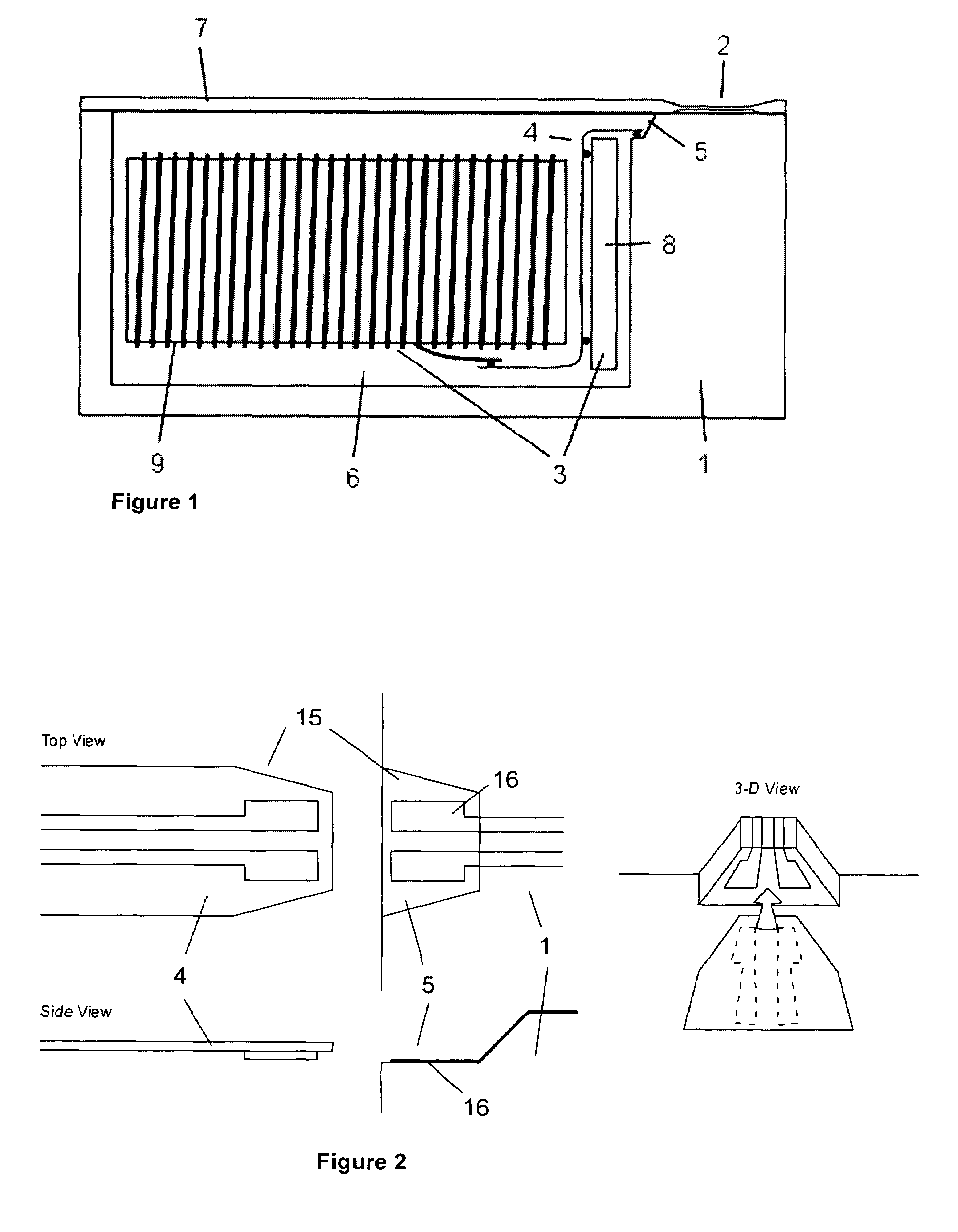Wireless device and system for monitoring physiologic parameters
a technology of physiologic parameters and wireless devices, applied in the field of wireless devices and systems for monitoring physiologic parameters, can solve the problems of inability to take advantage of silicon microfabrication technology, inability to deliver to patients with ease and minimal invasion, and inability to meet patient needs. the effect of minimizing communication distance, minimizing infection and minimizing invasion
- Summary
- Abstract
- Description
- Claims
- Application Information
AI Technical Summary
Benefits of technology
Problems solved by technology
Method used
Image
Examples
Embodiment Construction
[0022]The following description of preferred embodiments and methods provides examples of the present invention. The embodiments discussed herein are merely exemplary in nature, and are not intended to limit the scope of the invention in any manner. Rather, the description of these preferred embodiments and methods serves to enable a person of ordinary skill in the relevant art to make, use and perform the present invention.
[0023]The preferred communication scheme for the present invention, shown in FIG. 3, is based on magnetic telemetry. Without an external reader 18 present, an implant 17 lies passive and without any internal means to power itself. When a reading from a sensor 2 of the implant 17 is desired, the reader 18 is brought into a suitable range to the implant 17. The reader 18 then creates an RF (Radio Frequency) magnetic field large enough to induce sufficient voltage across an implant coil 9. When such a sufficient voltage exists across the implant coil 9, the implant ...
PUM
 Login to View More
Login to View More Abstract
Description
Claims
Application Information
 Login to View More
Login to View More - R&D
- Intellectual Property
- Life Sciences
- Materials
- Tech Scout
- Unparalleled Data Quality
- Higher Quality Content
- 60% Fewer Hallucinations
Browse by: Latest US Patents, China's latest patents, Technical Efficacy Thesaurus, Application Domain, Technology Topic, Popular Technical Reports.
© 2025 PatSnap. All rights reserved.Legal|Privacy policy|Modern Slavery Act Transparency Statement|Sitemap|About US| Contact US: help@patsnap.com



